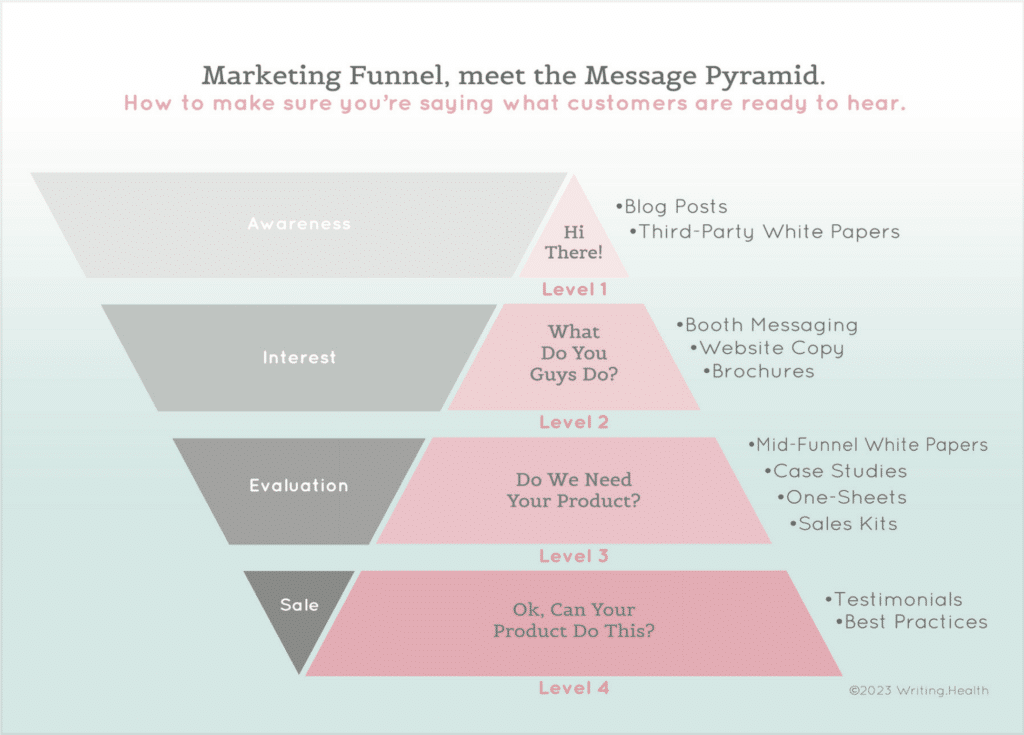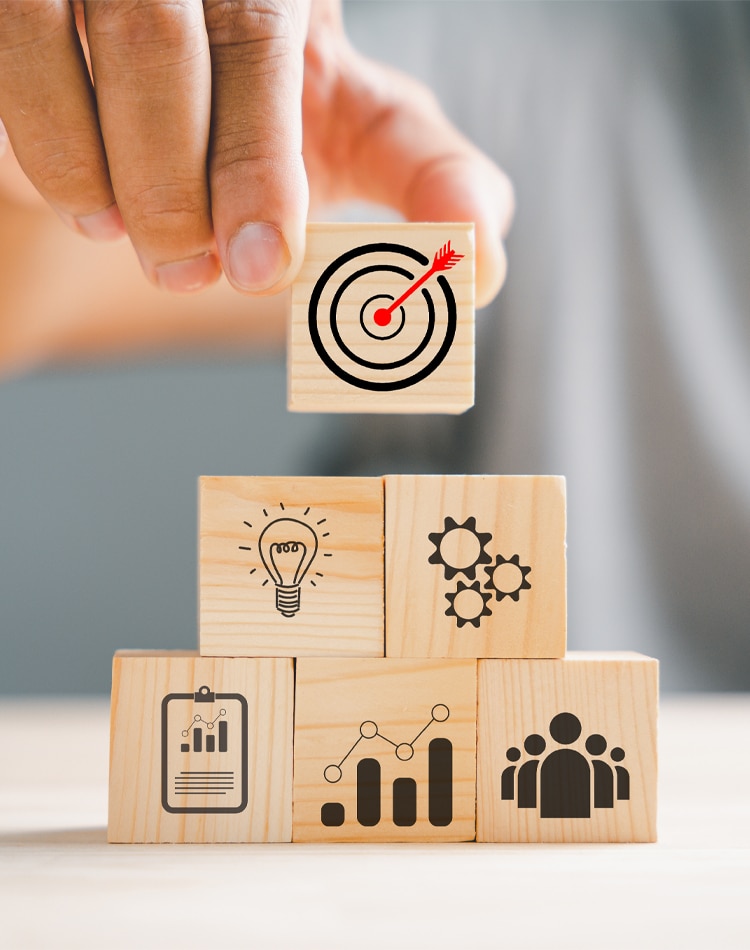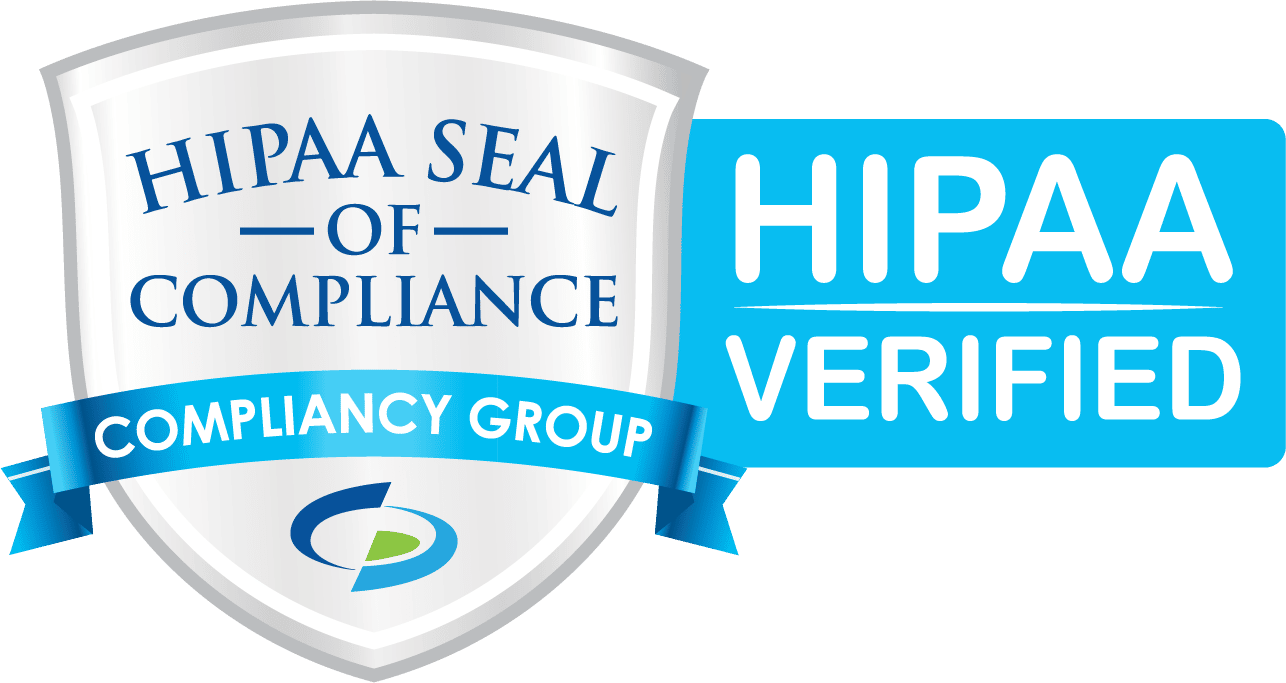Product marketers have a tendency to want to jump right into the product features and really show off their product. However, depending on what funnel stage a client is in, that might not be the best strategy.
In the earlier funnel stages, we need to ensure that we are laying the groundwork to help potential customers understand how the product can help them and whether or not it is a good fit for their needs. Hitting them with all of the features from the start can be overwhelming if you don’t provide that necessary context first.
As you get closer to the sale, you can provide more of the specifics about the product because you have already hooked in your potential customer with the information they need to know. It’s all about layering your content in the correct order so that you can empower the sales team to nurture those leads as they move through the funnel.
Understanding what customers need at each funnel stage
It’s important to provide the right content at every stage of the funnel so that we aren’t overwhelming potential customers with too much information or giving information that doesn’t answer the questions they have.
This is a concept we discussed with Marnie Hayutin, founder of Writing.Health, on an episode of The Health Connective Show. Marnie’s solution for this is the Message Pyramid, a multi-level guide that matches up with each stage of the classic Marketing Funnel:
- Awareness
- Interest
- Evaluation
- Sale

The Message Pyramid takes on an inverted shape to the funnel because we actually need to give less information in the earlier funnel stages, and can expand the information we provide as potential customers move through. As a potential customer moves further down the funnel, they are more interested in your product and more ready to receive information about your product’s features.
Your content should focus on meeting the customer where they are and answering the questions they have.
At the top of the funnel, we’re laying the groundwork to show why the product is important and why they should be interested in it. As we get closer to the sale, we provide more information about features to help potential customers understand what the product can do and whether or not it is the right fit for them.
How to Create Content for Each Funnel Stage
Product marketers need to be strategic about not only what information they provide at each stage, but also the format in which they deliver that information.
In the Awareness stage, that might mean blog posts or third-party white papers. As you move down the funnel, your website copy and trade show materials help potential customers understand what you do. When you get to the Evaluation and Sale stages, then you can start delivering your case studies, one-sheeters, testimonials, etc.
Looking at all of the different types of content needed to effectively deliver the right information at each funnel stage, it seems like a lot. When you throw different customer personas into the mix, it’s even more content. However, keep in mind that you don’t have to create an entirely new piece of content for each instance.

When you look at all of the different types of content needed to effectively deliver the right information at each funnel stage, it looks like a lot. When you throw different customer personas into the mix, it’s even more content. However, keep in mind that you don’t have to create an entirely new piece of content for each instance.
In the podcast episode, Marnie shared that she advises companies to adapt existing content. (We’re big fans of adapting content, as you might have guessed by now.) You can take an early-stage asset and add on more information to make it a suitable later-stage asset. You can also swap out or tweak certain sections of your content to make it applicable for different personas. It’s rare that you would need to start from scratch for every potential content format and persona once you’ve nailed down the base information you are sharing. At that point, it’s just about tailoring the information so that it works best for the format and persona you are targeting.
Creating the right content for each funnel stage empowers sales teams to have the right information for the potential customers they are speaking to. It also avoids overwhelming people with too much information. You can get potential customers to be just as excited about your product’s features as you are, as long as you are strategic about what you share and when.
As the marketing manager, Ashley ensures that our clients’ marketing strategies are put into action. This includes content writing, SEO, online advertising, analytics, and interfacing with the tools, systems, and team members needed to help our clients accomplish their marketing goals.
Michael spends a great deal of time with the healthcare industry both professionally and personally, which gives him the perspective of what stakeholders on either side of the care equation need.
He began coding in 2008 and subsequently shifted his attention entirely to online marketing. Michael completed his MBA in 2018, focusing on the intersection of healthcare and marketing.



